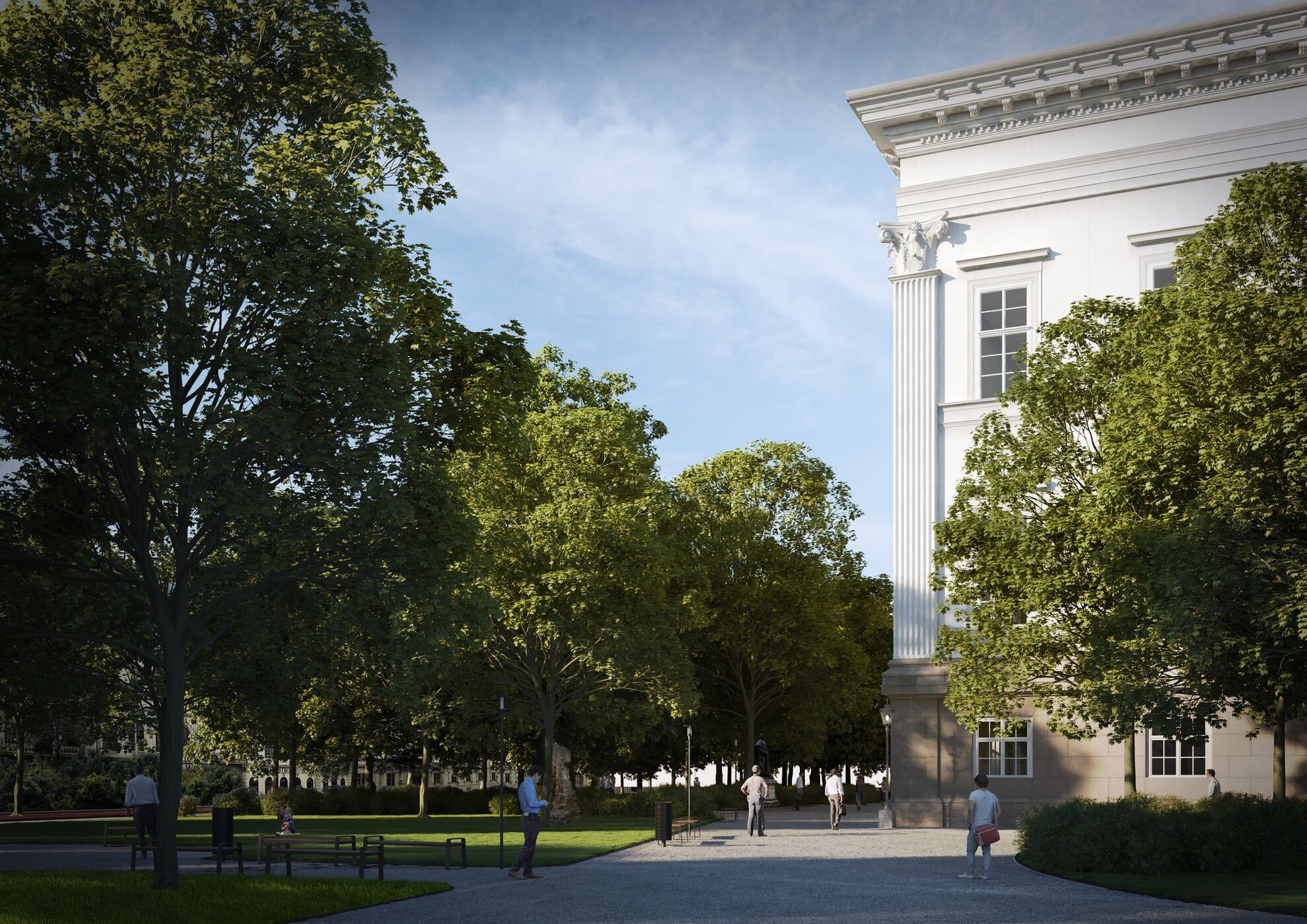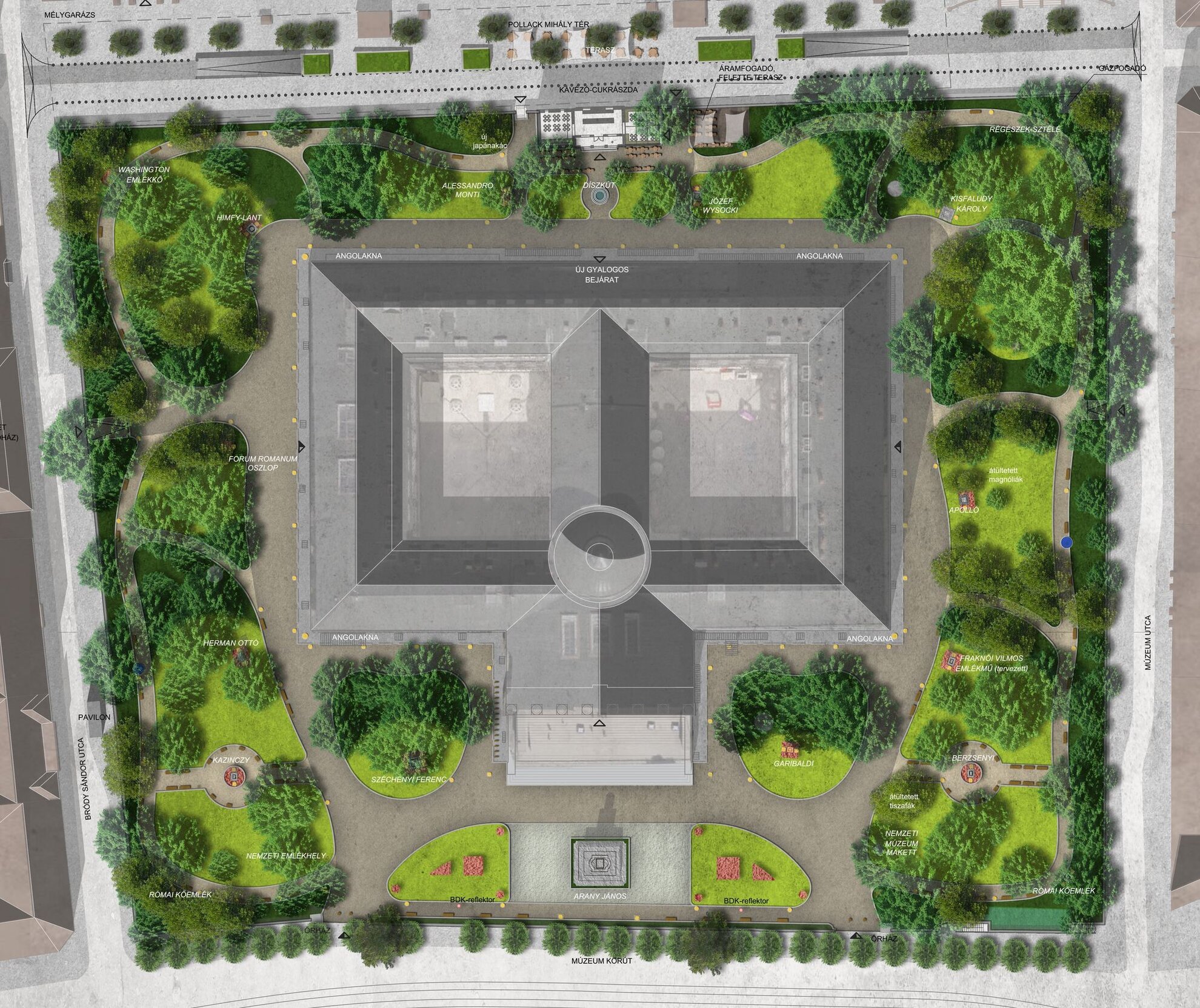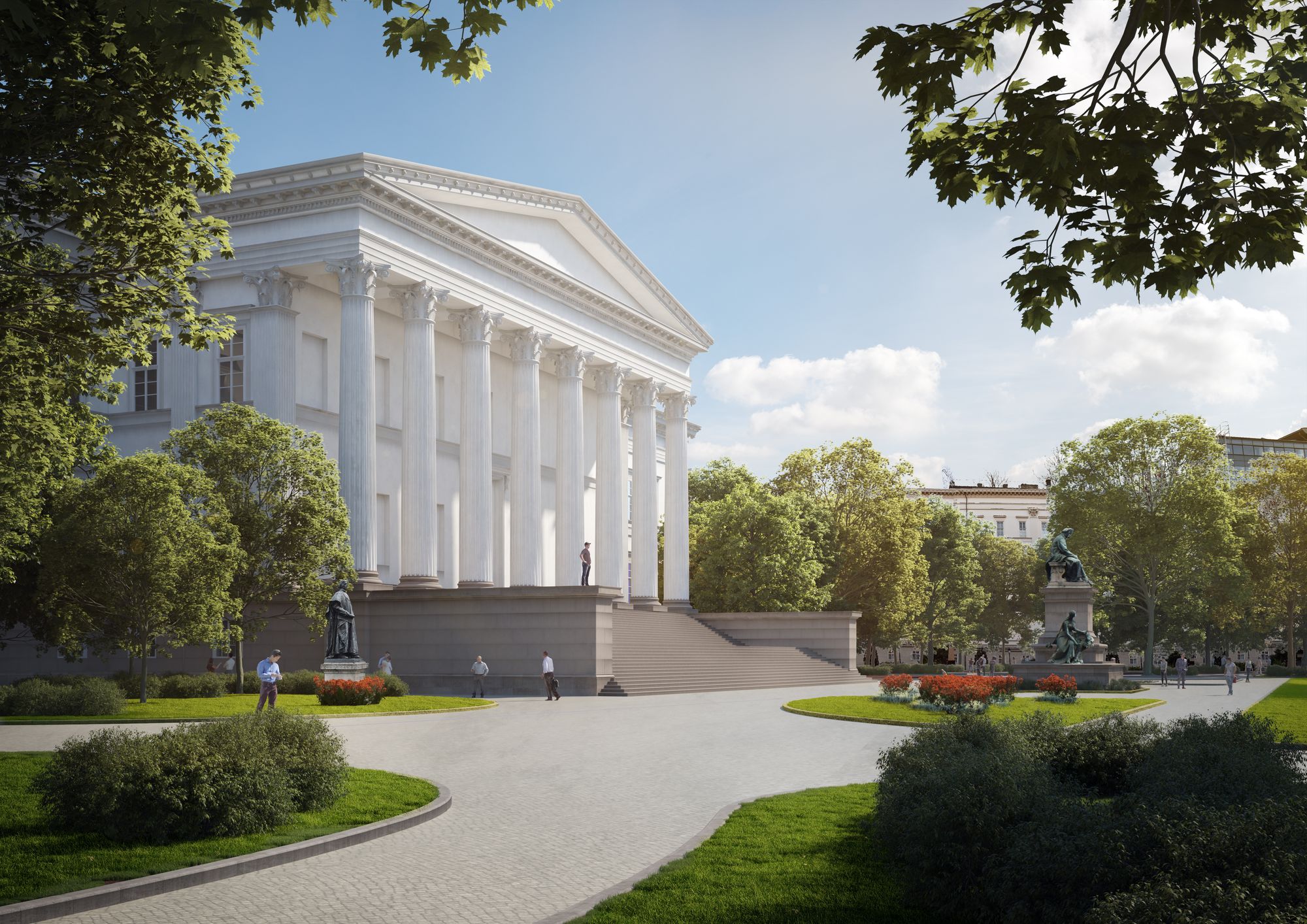Considered a key location of the 1848 Revolution, when the Hungarians rose up against the Habsburg regime, the courtyard of the National Museum has historical significance. Legend has it that this was very spot where thousands of vigorous citizens gathered to await the flood of rebels, while the nation’s prolific poet Sándor Petőfi wholeheartedly delivered his National Song standing at the museum stairway, inspiring many people to join the protests.
The museum had only been unveiled the year before – the garden would not be added until 1856 after a countrywide initiative to fund it. The statue standing here today is not of Petőfi buthis good friend and fellow poet János Arany. Petőfi died the year after his oration, fighting for his revolution. Every March 15th, now a national holiday, Hungarians congregate here to commemorate the anniversary of Petőfi’s seminal speech.

For the rest of the year, the park is a sedate haunt, students clustered on the museum’s monumental stairway or in the shade beneath the leafy branches to study or lounge. In recent years, the grounds and their age-old trees were not properly maintained, gradually becoming less and less welcoming over time. Rehabilitation of this popular place has long been required. In 2016, renewal plans for the garden were revealed – the winning entry was submitted by the local Tér-Team Ltd.
Works have already started to restore this outdoor community space and by the summer months, a significantly improved garden is set to welcome visitors. As part of the renovations, 38 of the ancient trees found in the park have to be removed as they pose danger to passersby. To compensate for the decaying flora, 25 new trees will be planted to fit the concept of this historic English-style garden, including red maple, ginkgo and magnolia. In addition, part of the current vegetation will be shifted around and replanted to open the park’s dense foliage.

The size of the garden’s active green area will be increased by 10-15%, while parts of the pavement that are now underutilized and the parking lot on the left side of the building will be removed. Refreshed greenery at this two-hectare-large oasis will span 8,200 square meters, and a tree-shaded pathway will stretch the length the museum building. Plans also show that the garden’s current statue collection will be refitted with new and renovated stone and bronze monuments.
In addition to works carried out at street level, the electric network, the water- and sewage system will also get a makeover. Further developments include the instalment of a Wi-Fi connection covering the entire park area. Though featured on the original plans, a café with an outdoor seating area will not be ready for this summer. During the renovation, the museum will operate according to its normal opening hours, but certain stages of the works will require visitors to use different entryways to access the building, so make sure you check the signage when you arrive.




